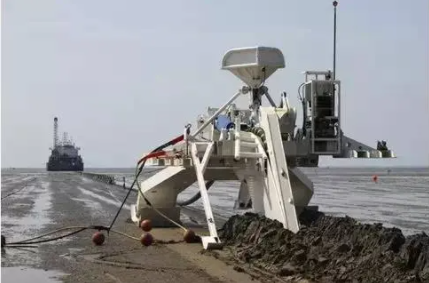
The submarine cable project is recognized as a complex and difficult large-scale project by countries all over the world. Submarine cables are wrapped with insulating material and laid on the seabed for telecommunication transmission. And submarine communication cables and submarine power cables are both of submarine cables So, how are submarine cables laid?
The Laying of Submarine Cables in the Deep Sea Area
One end of the submarine cable is fixed on the shore, and the ship slowly moves out to the sea, while sinking the submarine cable into the seabed, while using the excavator that sinks to the seabed for laying.
—The installation of transoceanic submarine cables requires the use of cable ships. When laying, a large roll of cable should be placed on the ship.
Before laying, conduct survey and cleaning of cable routing, cleaning of fishing nets and fishing gear and residues. Then the submarine cable laying construction vessel docked. They began to unwind the cable with another auxiliary construction vessel. And they transferred some cables to the auxiliary construction vessel.
After the laying of the cables was completed, the two ships began to lay the submarine cables in the direction of the terminal. Some deep-sea submarine cables are laid through dynamic positioning vessels. And the submarine cables are accurately laid to the designated routing positions.
—Another part of the cable-laying vessel is the excavator on the seabed, which will initially be placed on the shore. And they connected to the fixed end of the submarine cable. But forsubmarine cables, it is a counterweight that sinks the submarine cables into the seabed. And the boat had towed the excavator perform three jobs.
First, use the high-pressure water column to flush out the sediment on the seabed, and form a submarine optical cable trench. Second, lay the optical cable through the hole. Third, covering the sand on both sides of the submarine optical cable.
However, the submarine cable is relatively thick. And it has poor flexibility. So the forward speed of the ship must be strictly controlled. In addition, on the seabed with rough terrain, the robot needs to constantly detect the best path to prevent rocks from damaging the submarine cable.